 Escort Aircraft Carrier (Launched 1939 as Argentina maru, converted 1943)
Escort Aircraft Carrier (Launched 1939 as Argentina maru, converted 1943)WW2 IJN Aircraft Carriers:
Hōshō | Akagi | Kaga | Ryūjō | Sōryū | Hiryū | Shōkaku class | Zuihō class | Ryūhō | Hiyo class | Chitose class | Mizuho class* | Taihō | Shinano | Unryū class | Taiyo class | Kaiyo | Shinyo | Ibuki |IJN Kaiyō (海鷹, or Sea Hawk) was an escort carrier operated of the Imperial Japanese Navy, converted in wartime from the ocean liner Argentina Maru (launched in 1939 at Mitsubishi). She was purchased on 9 December 1942 for conversion into an escort carrier, commissioned on 23 November 1943. Given the general state of the IJN aviation at the time, notably an acute pilot shortage, she mostly acted as aircraft transport and training ship during her short career. Badly damaged by repeated air attacks notably in July 1945, she was never repaired and ended scrapped in 1946–48.
MV Argentina Maru and Brasil Maru

She started her existence as the fast luxury passenger liner “Argentina Maru” ordered by the Osaka Shosen Kaisha line in 1938. This was in exchange for a subsidy of her construction costs by the Navy Ministry as she was from the start designed in order to be easily converted to an aircraft carrier in wartime. As such, after plans were approved both by OSK and reviewed by the ministry she was ordered to Mitsubishi Heavy Industries Shipyard in Nagasaki, laid down in early 1938 (date unknown), launched on 9 December 1938 and Completed on 31 May 1939.
She was originally a 12,755 gross register tons, racy vessel, with a single funnel, large structure and mixed operation (cargo/passengers). Her acommodations included a 1st and second class with luxury furniture and decoration in the modern art deco Japanese style. She was sister ship of Brasil Maru. She measured originally 515 ft 8 in x 68 ft 9 in x 41 ft 3 in (157.21 x 21 x 12.6 meters) and was powered by two Mitsubishi-Sulzer diesels on 2 shafts for 18,000 SHP total. This resulted in a 17.2 knots cruise speed and an appreciable 21.4 knots max. This was not still the fleet speed the admiralty wanted though. The two sisters were used with their line as intended with few commercial runs in a single year, round the world to South America via the Cape of Good Hope, and then between Kobe and Dairen in Manchuria to avoid a possible seizure in case of war in 1940. In May 1941, both were requisitioned by the IJN and became auxiliary transports. In their second life they were armed to protect thermselves and be usable as auxiliary merchant cruisers iof needed with either two stock WW1 12 cm guns and 2 single 7.7mm Type 92 AA machine guns, her sister had instead beefier type 93 13 mm Machine guns.
With the defeat at Midway and losses the IJN decided to convert both as carriers. ARGENTINA MARU became KAIYO, converted at Yokosuka from August 1942, but BRASIL MARU was torpedoed and sunk by an a US submarine while underway off Truk in the Carolines and never converted. Thus Kaiyo remained sole in her class.
Conversion Design
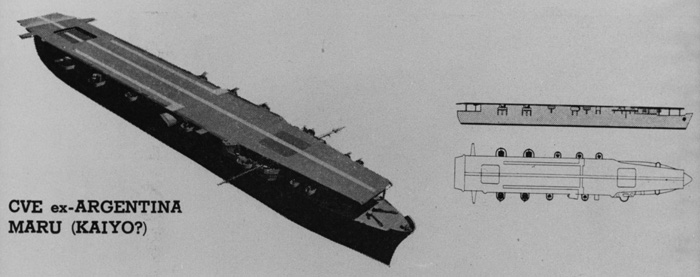
ONI depiction of IJN Kaiyo src Naval Historical Command
The reconstruction brought her overall lenght, courtesy of her flight deck of 155 meters (508 ft 6 in) to 166.55 m (546 ft 5 in) overall for a beam of 21.9 meters (71 ft 10 in) and draft of 8.04 meters (26 ft 5 in) which also brought her displacement to 13,600 tonnes (13,400 long tons) standard load and 16,483 t (16,223 long tons) fully loaded. The flight deck was now 21.9 meters (72 ft) wide, with the lenght cited above, topping a single hangar served by two aircraft elevators on the centerline. She had no island to avoid interference and simplify the design, and could operate 24 aircraft, all taking place in the hangar if needed so to free the deck for transport. Her machinery was completely changed as well to reclaim two knots (see below).
Her crew amounted to 829 officers and ratings, probably comprising the air crews.
If she lacked a proper bridge, she had many sponsons for five large derrick mast antennae from commication, and two fire control systems located port and starboard forward maoinly for her generous AA armament (see later). She ended quite powerfully armed for her size and type, if not the best armed Japanese CVE.
Powerplant
As part of her conversion, her original diesel engines, which had given her a top speed of 21.5 knots (39.8 km/h; 24.7 mph), were replaced by a pair of destroyer-type geared steam turbine sets with a total of 52,000 shaft horsepower (39,000 kW), each driving one propeller. Steam was provided by four water-tube boilers and Kaiyō now had a maximum speed of 23 knots (43 km/h; 26 mph). She carried enough fuel oil to give her a radius of 7,000 nautical miles (13,000 km; 8,100 mi).
Armament
She carried four twin 127mm/40 or 5 inches Type 89 dual purpose mounts located on large sponsons aft, supported by pillars, and eight triple 25mm/60 type 96 AA guns fore and aft as well as two depht charges racks of 4 charges each at the poop for ASW defence.
127mm/40 or 5 inches Type 89
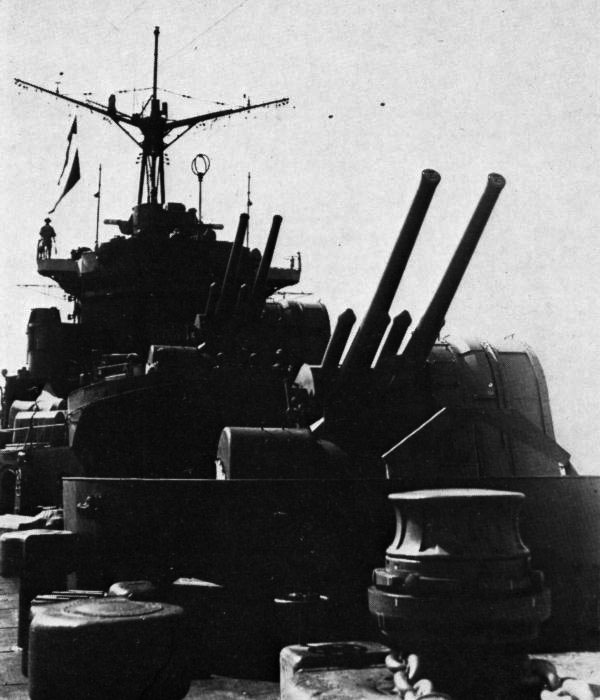 Standard dual purpose artillery in service from 1932. Twin gun mounts
Standard dual purpose artillery in service from 1932. Twin gun mounts
Barrel 5,080 mm (16 ft 8 in) bore length for 3,100 kgs (6,834 lb). Elevation +90°, manual, 8-14 rpm
Shell fixed 127 x 580mm .R 23.45 kgs (51.7 lb) Mvz 725 mps (2,380 ft/s) range 14,800 m (48,600 ft) 45°, 9,440 meters (30,970 ft) ceiling.
Main article
25mm/60 type 96 AA
Barrel 1.5 m (4 ft 11 in) L/60, weight 1,800 kg (4,000 lb) triple mount, crew 9. +85° elevation.
Shell 25×163mm 0.98 inches, Gas operated 200–260 rpm (cyclic) with 15-round box magazine
Muzzle velocity 820 m/s (2,700 ft/s) range 85° 3 km (9,800 ft) effective.
Main article
Type 1 2-go radar
The Type 2 Model 2 Model 1 also called the Air Search Radar (“21-Go” Air Search Radar) and is a bedframe 1850 lb (840 kg).
Wavelength 150 cm pwdt 10 microsecond, PRF 1000 Hz Power 5 kW Range 60 nm (100 km) aircraft group. ~1 mile accuracy.
Using two horizontal sets of four dipoles as a transmitter and two horizontal sets of three dipoles for the receiver and an A scope
It was installed on Taiyo, Chuyo and Unyo in 1943, and later on Kaiyo.
Src
Air Group
She carried 25 aircraft and was slated to operate the A6M fighters, D3A and D4Y dive bombers as well as the B5N, B6N torpedo bombers in attack roles.
However she spent most of ger time carrying aircraft instead. In 1944 in her only true combat as an aircraft carrier she carried eighteed Mitsubishi A6M2 zero fighters and six D3A2 Dive Bombers.
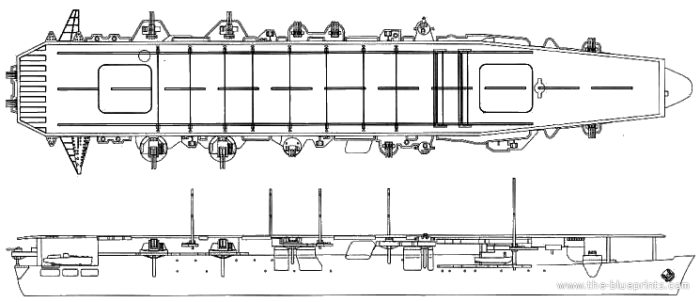
The blueprint.com, unknown origin
⚙ specifications |
|
| Displacement | 13,600 t (13,400 long tons) standard, 16,483 t (16,223 long tons) loaded |
| Dimensions | 166.55 x 21.9 x 8.04m (546 ft 5 in x 71 ft 10 in x 26 ft 5 in) |
| Propulsion | 2 shafts Kampon geared steam turbines, 4× water-tube boilers 52,000 shp (39,000 kW) |
| Speed | 23 knots (43 km/h; 26 mph) |
| Range | 7,000 nmi (13,000 km; 8,100 mi) |
| Armament | 4×2 12.7 cm/40 Type 89, 8×3 Type 96 25 mm AA guns |
| Sensors | 1× Type 2, Mark 2, Model 1 air search radar |
| Air Group | 24 |
| Crew | 829 |
Career of IJN Kaiyō

Argentina Maru used as troop transport in 1941.
Argentina Maru was used on more secured line close to China in 1940 and from December 1941 it was requisitioned, armed, and used as troop transport for about a year. She was acquired on 9 December 1942 and sent for conversion at Nagasaki on 10 December, formally purchased on the 11th. The conversion was completed on 23 November 1943 so on about eleven months and renamed Kaiyō. Initially she was deployed to transport reinforcement aircraft to various overseas bases. Starting with the 23rd Air Flotilla in Singapore via Manila by January 1944 in Convoy HI-33. She also carried when back, the 551st Air Group to Truk. On 10 February underway from Palau, she was ambushed by USS Permit at night attack, torpedoed, buy they missed. IJN Kaiyō was refitted from 23 February to 2 March and assigned to the 1st Surface Escort Division on 17 March 1944.
She escorted the Convoy HI-57 to Singapore via Taiwan and Indochina and then Convoy HI-58 on the return voyage with one of her aircraft spotting the submarine USS Robalo surfaced while trailing the convoy. Escorts rushed to attack but she escaped.
In late May 1944 she was part of Convoy HI-65 with IJN Shinyo to Singapore. One escort was torpedoed underway, two merchantmen collided as they tried to dodged the incoming torpedoes. The convoy arrived on 12 June. Kaiyō next joined fast Convoy HI-66 back to Japan, arriving on 26 June. She was drydocked at Kure Naval Arsenal for basic maintenance in early July with more 25 mm AA guns installed. She teamed with IJN Taiyō and was again used to ferry aircraft to the Philippines in the Convoy HI-69. Sailing out on 13 July she made it on the 20th. The convoy left Manila on the 24th and arrived in Japan on 1 August. However her machinery broke down as she powered up to depart with another convoy on 4 August and ended in repairs at Sasebo.
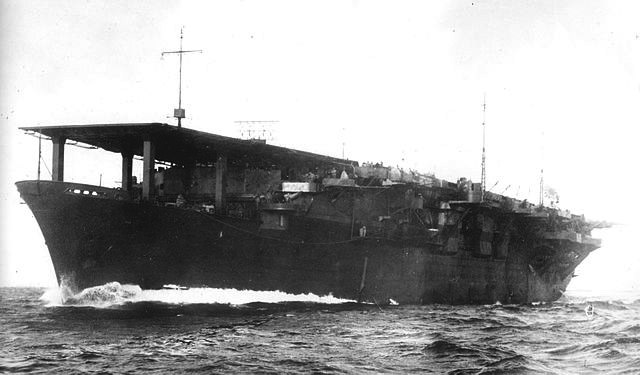
On 25 October, once repaired, she ferried 12 transport aircraft to Keelung in Taiwan, and was back at Kure on 2 November. Next she was assigned to Convoy HI-83 bound to Singapore (13 December) via Taiwan, and also stopping in the Hainan Island on 25 November. Underway the crew learned she had been reassigned to 1st Escort Fleet on 10 December. She returned home with the Convoy HI-84 and was ambushed but missed by the submarine USS Dace on 31 December. While at Moji on 13 January 1945, she was sent Kure and and started a new carrer as a pilot training vessel, not leaving in the Inland Sea.
On 19 March 1945, she was moored at Kure, when surprised by a raid of Task Force 58. She took a direct hit close to her port engine room, starting fires flooding the area. She listed but the crew managed to stop it while she was moved into shallow water near Etajima Island and grounded. Later she was not declared a total constructive loss and decision was taken not repair her enough for another year of operation. On 20 April she became a target ship for kamikaze crews. Next she was on training duties. While underway she hit an airborne mine on 18 July but damage was quickly repaired.
Six days later she was hit by a raid from the Fleet Air Arm, British Pacific Fleet Her captain decided to sail away and escape but she soon hit a another mine, this time with more damage and lost power. She was towed overnight to Beppu Bay and grounded, watiing fro repairs. While she layed there, she was attacked again on 28 July by TF 58 aircraft and took at least two near hits, lost remaining power. Pumps also cease working. Shz was also hit by 18 rockets (5 inches caliber) loosing in the process 20 crewmen, many more wounded. Still grounded she started to list to port. The next day by B-25J Mitchell of the 5th Air Force and aicraft from USS Ticonderoga’s air group assaulted her. After many more hits, Captain Shuichi Osuga ordered to abandon any repair, asked the boilers be flooded with sea water, machinery coated in oil for preservation and the crew left, except for AA gunners.
Next came from Okinawa another B-25J Mitchell raid, this time from the 38th Bomb Group on 9 August. Despite her camouflage netting and foliage she was spotted and attacked, taking hits. Her list increased so much the remaining AA crew was ordered to leave. She stayed there, semi submerged until the end of the war. Afterwards she was stricken on 20 November 1945, and scrapped in place from 1 September 1946 to 30 January 1948 by Nissan Salvage.
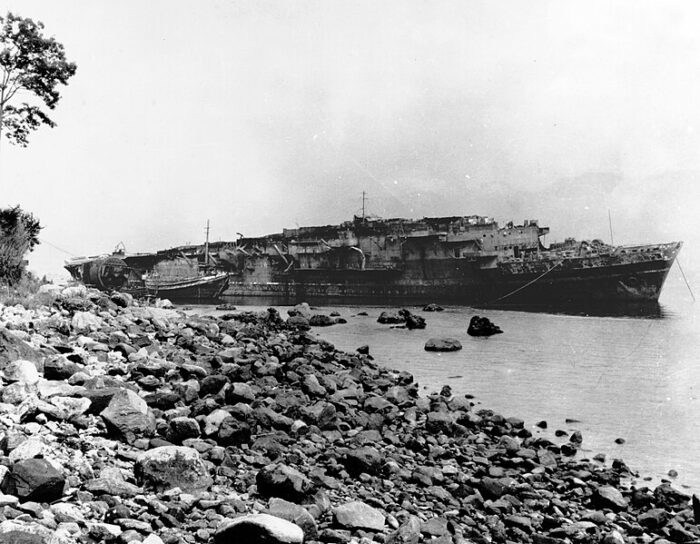
Read More/Src
Books
Campbell, John (1985). Naval Weapons of World War II. Annapolis, Maryland: Naval Institute Press. ISBN 0-87021-459-4.
Chesneau, Roger, ed. (1980). Conway’s All the World’s Fighting Ships 1922-1946. Greenwich: Conway Maritime Press. ISBN 0-85177-146-7.
Hobbs, David, Commander (2011). The British Pacific Fleet: The Royal Navy’s Most Powerful Strike Force. Annapolis, Maryland: Naval Institute Press. ISBN 978-1-59114-044-3.
Jentschura, Hansgeorg; Jung, Dieter & Mickel, Peter (1977). Warships of the Imperial Japanese Navy, 1869–1945. Annapolis, Maryland: United States Naval Institute. ISBN 0-87021-893-X.
Lengerer, Hans & Rehm-Takahara, Tomoko (1985a). “The Japanese Aircraft Carriers Junyo and Hiyo”. In Lambert, Andrew (ed.). Warship IX. London: Conway Maritime Press. pp. 9–19, 105–114, 188–193. ISBN 0-85177-403-2.
Lengerer, Hans & Rehm-Takahara, Tomoko (1985b). “The 12cm Multiple Rocket Launcher of the Imperial Japanese Navy”. In Lambert, Andrew (ed.). Warship IX. London: Conway Maritime Press. pp. 125–33. ISBN 0-85177-403-2.
Polmar, Norman & Genda, Minoru (2006). Aircraft Carriers: A History of Carrier Aviation and Its Influence on World Events. Vol. 1, 1909–1945. Washington, D.C.: Potomac Books. ISBN 1-57488-663-0.
Stille, Mark (2005). Imperial Japanese Navy Aircraft Carriers 1921–1945. New Vanguard. Vol. 109. Oxford, UK: Osprey Publishing. ISBN 1-84176-853-7.
Tully, Anthony P. (July 2009). “IJN Kaiyo: Tabular Record of Movement”. Kido Butai. Combinedfleet.com. Retrieved 12 November 2011.
Links
http://www.microworks.net/PACIFIC/battles/end_of_japan.htm
https://ww2db.com/ship_spec.php?ship_id=86
https://www.navypedia.org/ships/japan/jap_cv_kaiyo.htm
http://www.combinedfleet.com/Argentina_t.htm
http://www.combinedfleet.com/Kaiyo.htm
http://www.combinedfleet.com/Argentina_c.htm
https://en.wikipedia.org/wiki/Japanese_aircraft_carrier_Kaiy%C5%8D
https://www.plazajapan.com/4968728400877/
Videos
Model Kits
http://www.fstarmodel.com/nd.jsp?groupId=3&id=23
https://www.scalehobbyist.com/manufacturers/Fujimi_Models/Ship_Models/argentina-maru-cargo-liner/FUJ00040081/product.php

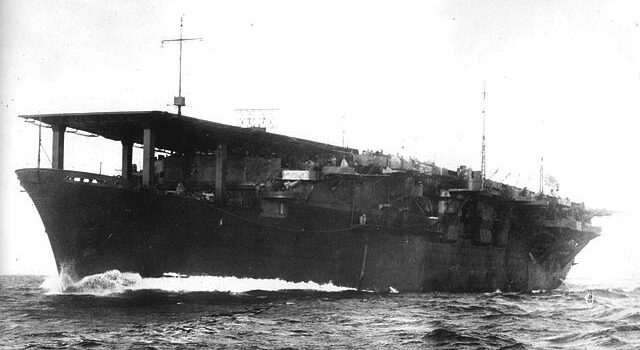
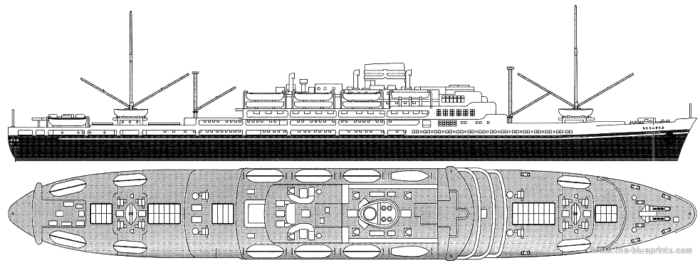
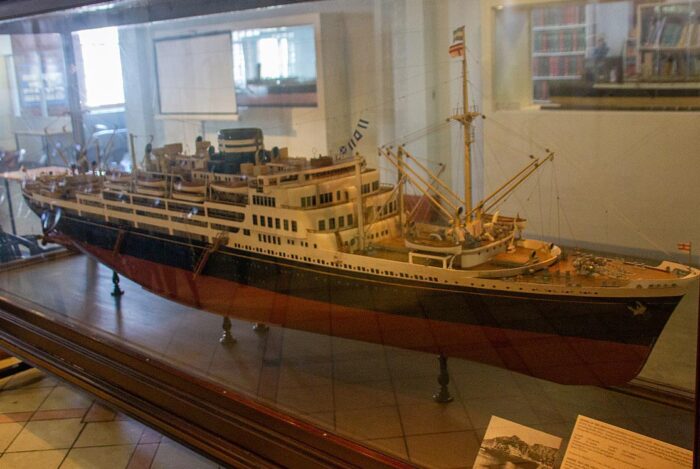
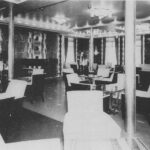
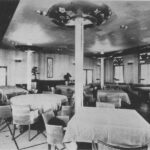
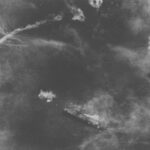
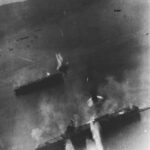
 Latest Facebook Entry -
Latest Facebook Entry -  X(Tweeter) Naval Encyclopedia's deck archive
X(Tweeter) Naval Encyclopedia's deck archive Instagram (@navalencyc)
Instagram (@navalencyc)





 French Navy
French Navy Royal Navy
Royal Navy Russian Navy
Russian Navy Armada Espanola
Armada Espanola Austrian Navy
Austrian Navy K.u.K. Kriegsmarine
K.u.K. Kriegsmarine Dansk Marine
Dansk Marine Nautiko Hellenon
Nautiko Hellenon Koninklije Marine 1870
Koninklije Marine 1870 Marinha do Brasil
Marinha do Brasil Osmanlı Donanması
Osmanlı Donanması Marina Do Peru
Marina Do Peru Marinha do Portugal
Marinha do Portugal Regia Marina 1870
Regia Marina 1870 Nihhon Kaigun 1870
Nihhon Kaigun 1870 Preußische Marine 1870
Preußische Marine 1870 Russkiy Flot 1870
Russkiy Flot 1870 Svenska marinen
Svenska marinen Søværnet
Søværnet Union Navy
Union Navy Confederate Navy
Confederate Navy Armada de Argentina
Armada de Argentina Imperial Chinese Navy
Imperial Chinese Navy Marinha do Portugal
Marinha do Portugal Mexico
Mexico Kaiserliche Marine
Kaiserliche Marine 1898 US Navy
1898 US Navy Sovietskiy Flot
Sovietskiy Flot Royal Canadian Navy
Royal Canadian Navy Royal Australian Navy
Royal Australian Navy RNZN Fleet
RNZN Fleet Chinese Navy 1937
Chinese Navy 1937 Kriegsmarine
Kriegsmarine Chilean Navy
Chilean Navy Danish Navy
Danish Navy Finnish Navy
Finnish Navy Hellenic Navy
Hellenic Navy Polish Navy
Polish Navy Romanian Navy
Romanian Navy Turkish Navy
Turkish Navy Royal Yugoslav Navy
Royal Yugoslav Navy Royal Thai Navy
Royal Thai Navy Minor Navies
Minor Navies Albania
Albania Austria
Austria Belgium
Belgium Columbia
Columbia Costa Rica
Costa Rica Cuba
Cuba Czechoslovakia
Czechoslovakia Dominican Republic
Dominican Republic Haiti
Haiti Hungary
Hungary Honduras
Honduras Estonia
Estonia Iceland
Iceland Eire
Eire Equador
Equador Iran
Iran Iraq
Iraq Latvia
Latvia Liberia
Liberia Lithuania
Lithuania Mandchukuo
Mandchukuo Morocco
Morocco Nicaragua
Nicaragua Persia
Persia San Salvador
San Salvador Sarawak
Sarawak Uruguay
Uruguay Venezuela
Venezuela Zanzibar
Zanzibar Warsaw Pact Navies
Warsaw Pact Navies Bulgaria
Bulgaria Hungary
Hungary

 Bundesmarine
Bundesmarine Dutch Navy
Dutch Navy Hellenic Navy
Hellenic Navy Marina Militare
Marina Militare Yugoslav Navy
Yugoslav Navy Chinese Navy
Chinese Navy Indian Navy
Indian Navy Indonesian Navy
Indonesian Navy JMSDF
JMSDF North Korean Navy
North Korean Navy Pakistani Navy
Pakistani Navy Philippines Navy
Philippines Navy ROKN
ROKN Rep. of Singapore Navy
Rep. of Singapore Navy Taiwanese Navy
Taiwanese Navy IDF Navy
IDF Navy Saudi Navy
Saudi Navy Royal New Zealand Navy
Royal New Zealand Navy Egyptian Navy
Egyptian Navy South African Navy
South African Navy






























 Ukrainian Navy
Ukrainian Navy dbodesign
dbodesign